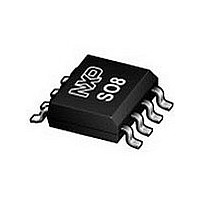PCA82C251T/N3 NXP Semiconductors, PCA82C251T/N3 Datasheet - Page 3

PCA82C251T/N3
Manufacturer Part Number
PCA82C251T/N3
Description
11N8511
Manufacturer
NXP Semiconductors
Specifications of PCA82C251T/N3
Number Of Transceivers
1
Power Down Mode
Standby
Standard Supported
ISO 11898
Operating Supply Voltage (max)
5.5V
Operating Supply Voltage (typ)
5V
Operating Supply Voltage (min)
4.5V
Package Type
SO
Supply Current
85mA
Operating Temperature (max)
125C
Operating Temperature (min)
-40C
Operating Temperature Classification
Automotive
Mounting
Surface Mount
Pin Count
8
Ic Interface Type
Serial
No. Of Tx Buffers
1
No. Of Rx Buffers
1
Supply Voltage Range
4.5V To 5.5V
Digital Ic Case Style
SOIC
No. Of Pins
8
Operating Temperature Range
-40°C To +125°C
Rohs Compliant
Yes
Lead Free Status / RoHS Status
Compliant
Available stocks
Company
Part Number
Manufacturer
Quantity
Price
Part Number:
PCA82C251T/N3
Manufacturer:
NXP/恩智浦
Quantity:
20 000
Company:
Part Number:
PCA82C251T/N3.118
Manufacturer:
NXP
Quantity:
200 000
Company:
Part Number:
PCA82C251T/N3Ј¬118
Manufacturer:
IEP
Quantity:
5 000
NXP Semiconductors
8. Functional description
PCA82C251_4
Product data sheet
7.2 Pin description
Table 3.
The PCA82C251 is the interface between a CAN protocol controller and the physical bus.
It is primarily intended for applications up to 1 MBd in trucks and buses. The device
provides differential transmit capability to the bus and differential receive capability to the
CAN controller. It is fully compatible with the “ISO 11898-24 V” standard.
A current-limiting circuit protects the transmitter output stage against short-circuits to
positive and negative battery voltage. Although power dissipation will increase as a result
of a short circuit fault condition, this feature will prevent destruction of the transmitter
output stage.
If the junction temperature exceeds approximately 160 °C, the limiting current of both
transmitter outputs is decreased. Because the transmitter is responsible for most of the
power dissipated, this will result in reduced power dissipation and hence a lower chip
temperature. All other parts of the IC will remain operational. The thermal protection is
needed, in particular, when a bus line is short-circuited.
The CANH and CANL lines are also protected against electrical transients which may
occur in an automotive environment.
Pin 8 (Rs) allows three different modes of operation to be selected: High-speed, Slope
control and Standby.
For high-speed operation, the transmitter output transistors are simply switched on and off
as fast as possible. In this mode, no measures are taken to limit the rise and fall slopes. A
shielded cable is recommended to avoid RFI problems. High-speed mode is selected by
connecting pin 8 to ground.
Slope control mode allows the use of an unshielded twisted pair or a parallel pair of wires
as bus lines. To reduce RFI, the rise and fall slopes should be limited. The rise and fall
slopes can be programmed with a resistor connected from pin 8 to ground. The slope is
proportional to the current output at pin 8.
If a HIGH level is applied to pin 8, the circuit enters a low-current Standby mode. In this
mode, the transmitter is switched off and the receiver is switched to a low current. If
dominant bits are detected (differential bus voltage >0.9 V), RXD will be switched to a
Symbol
TXD
GND
V
RXD
V
CANL
CANH
Rs
CC
ref
Pin description
Pin
1
2
3
4
5
6
7
8
Rev. 04 — 28 January 2010
Description
transmit data input
ground
supply voltage
receive data output
reference voltage output
LOW-level CAN voltage input/output
HIGH-level CAN voltage input/output
slope resistor input
CAN transceiver for 24 V systems
PCA82C251
© NXP B.V. 2010. All rights reserved.
3 of 16
















